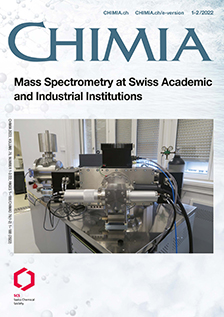Structural Analysis of Monoclonal Antibodies with Top-down and Middle-down Electron Transfer Dissociation Mass Spectrometry: The First Decade
DOI:
https://doi.org/10.2533/chimia.2022.114PMID:
38069757Keywords:
Antibody-drug conjugate, Drug-to-antibody ratio, Electron transfer dissociation, Fourier transform mass spectrometry, Orbitrap, ProteoformAbstract
Monoclonal antibodies (mAbs) are protein biotherapeutics with a proven efficacy toward fighting life-threatening diseases. Their exceptional healing potential drives the annual increase in the number of novel mAbs and other antibody-like molecules entering clinical trials and the number of approved mAb-based drugs. Mass spectrometry (MS) offers high selectivity and specificity for the potentially unambiguous identification and comprehensive structural characterization of proteins, including at the proteoform level. It is thus not surprising that MS-based approaches are playing a central role in the biopharma laboratories, complementing and advancing traditional biotherapeutics characterization workflows. A combination of MS approaches is required to comprehensively characterize mAbs’ structures: the commonly employed bottom-up MS approaches are efficiently complemented with mass measurements at the intact and subunit (middle-up) levels, together with product ion analysis following gas-phase fragmentation of precursor ions performed at the intact (top-down) and subunit (middle-down) levels. Here we overview our group’s contribution to increasing the efficiency of these approaches and the development of the novel strategies over the past decade. Our particular focus has been on the top-down and middle-down MS methods that utilize electron transfer dissociation (ETD) for gas-phase protein ion fragmentation. Several approaches pioneered by our group, particularly an ETD-based middle-down approach, constitute a part of commercial software solutions for the mAb’s characterization workflows.
Funding data
-
Schweizerischer Nationalfonds zur Förderung der Wissenschaftlichen Forschung
Grant numbers 147006 -
Horizon 2020
Grant numbers 829157;964553
Downloads
Published
Issue
Section
License
Copyright (c) 2022 Luca Fornelli, Daniel Ayoub, Kristina Srzentic, Konstantin Nagornov, Anton Kozhinov, Natalia Gasilova, Laure Menin, Alain Beck, Yury Tsybin

This work is licensed under a Creative Commons Attribution 4.0 International License.







